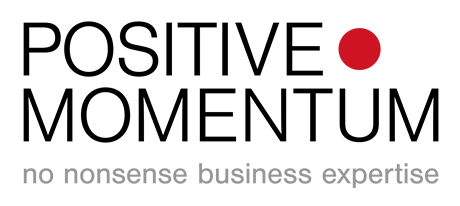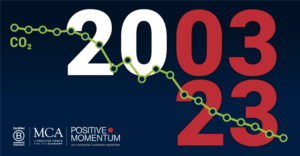It’s doesn’t matter what sector you work in, it’s digital now – and that requires digital leadership.
The pandemic era has lasted a year so far. This cataclysmic event has imposed massive change – on people and businesses alike – but we’ve responded, with more digital acceleration in 12 months than in the previous 5 years.
During my work with clients this year, I’ve observed a new kind of digital leadership, one which has prevailed over the external challenges, and which I believe will endure for our future.
Here are 5 dimensions of Digital Leadership:
Storytelling mastery
Never before has it been more important to express complicated concepts in a simple way to a wide range of audiences. Much of the change we’ve seen in the last year has been fuelled by technology, but there is no change without people, and people need narratives to connect them to change and guide them through it.
Whether it’s an Information Memorandum for investors, communicating a new 5-year strategy to a globally distributed workforce, bringing a team together to explain how & why a business needs to adapt, or keeping your customers connected with your brand as it evolves, the story – and how you tell it – is critical.
The democratisation of technology has put powerful tools into everyone’s hands, and with a little creative wit, any message can be elevated to cut through. Property Directors can make engaging videos on their phones, a whole strategy can be expressed in a 2-minute animation, and video conferencing can be an interactive experience with TV-like production values (rather than a video-off snooze fest or, worse still, a distraction of unintended cat filters or dodgy shelf items in the background).
Agile working
2020 was the year that agile working transcended software development and broke into the cross-functional mainstream, by sheer necessity. The core principles of Agile are enshrined in the Agile Manifesto, and they can apply to any team, any product or process. Sky was practicing Agile HR before 2020, and Agile Sales has been a thing since about 2018.
Agile in any context has the following hallmarks in common:
- Small autonomous teams
- Breaking down big tasks into smaller manageable goals
- A structure of 1 or 2-week sprints with rituals of daily stand-ups, end-of-sprint demos and sprint planning
- The license to flex the strategy to meet the goals
- Measuring the things that matter and taking accountability
Creative collaboration
The ability to pivot and conceive new solutions to sudden challenges is rocket-fuelled by creative collaboration. I think creative collaboration has the following features, which are inter-connected:
- Powered by diversity. Here is the real competitive advantage in bringing together a span of lived experience and perspective to accelerate innovation. The potential difference across viewpoints is a voltage which energises solution-finding. The mono-dimensional team will move at a fraction of the pace.
- Dissolving silos. The org chart is good for giving every team member a home and a management structure, but it doesn’t need to be built of impermeable brick walls. Part of the power of the agile squad lies in its span of functions – faster access to wider knowledge to help get stuff done.
- Transcending the ego. Creative collaboration is about ‘we’ not ‘I’. Leading in an agile environment is about asking ‘what can I do to help you be more successful?’, rather than issuing orders. The best leadership comes from listening more & speaking less, the best innovation comes from building on other people’s ideas rather than steam-rollering your own agenda through.
- Partnering. At Positive Momentum we’re able to offer better solutions for clients by teaming up to bring skillsets together. The marketing tech start-up of which I am a non-exec director is getting to market quicker by identifying the right partnerships to help achieve our goal faster. We don’t need to create it all from scratch, we can focus our energy on building on top of what’s great already, and filling in the gaps.
Embracing new technologies
Regular readers of my articles will know my perspective on technology: it’s evolving faster than the human capacity for change. That’s only a threat if our relationship with technology doesn’t change too – artificial intelligence enables us to focus on emotional intelligence, so we humans should make the full use of the technologies available to us to be the best we can be and do our best work.
The pandemic era has put video-conferencing and collaborative document platforms in everyone’s tool kit. I’ve added white boarding tool Miro.com to my consulting tool box; video production in iMovie is now supercharged with graphics made in Keynote, as well as viddyoze.com and canva.com, and I’m now streaming & podcasting. Data dashboarding tool Tableau is also making an appearance, as is Monday.com for project management, and Trello.com for creating sales pipelines.
You don’t have to have a PhD in computer science (just make sure you have some friends who do), but you should seek to understand the world of technology in your field (buy your PhD friend a coffee) to begin to grasp what is possible. And you definitely don’t need a degree in computer science to get to grips with the plethora of consumer-friendly tools out there to be more effective in your collaboration and communication & process automation.
Wellbeing wisdom
Moore’s Law is the observation from a chipset designer at Intel in 1965 that the number of transistors in an integrated circuit doubled every year, and it lives on. Technology growth is exponential. The pace is accelerating. How can mere humans keep up? By looking after ourselves and each other. We do our best work when we are at our whole best.
A young producer at Sky News once came to me distraught because his body clock couldn’t cope with the shift pattern. A conversation revealed he’d stopped playing football, so I suggested started again. Within a couple of weeks he was back on his game, both on the pitch and in the newsroom.
Lack of attention to physical fitness and wellbeing is a shame target in the office banter league. That’s a good thing, on balance, (as long as it’s all in good spirit); it’s easy to tell your mates or even your boss ‘I need to get fit / back in the gym / lose a few pounds’, but is it as easy is it to say ‘I’m miserable / depressed / anxious’?
Furthermore, how many bosses have you worked for who never seem to stop? What message did that send to you?
Digital acceleration brings a commensurate duty to maintain a working cadence and environment which is, in the words of the Agile Manifesto ‘indefinitely sustainable’. In the holistic sense, it’s a marathon not a sprint. Digital leadership must include raising attention to mental health to the same level as physical wellbeing, because they are so closely connected.








